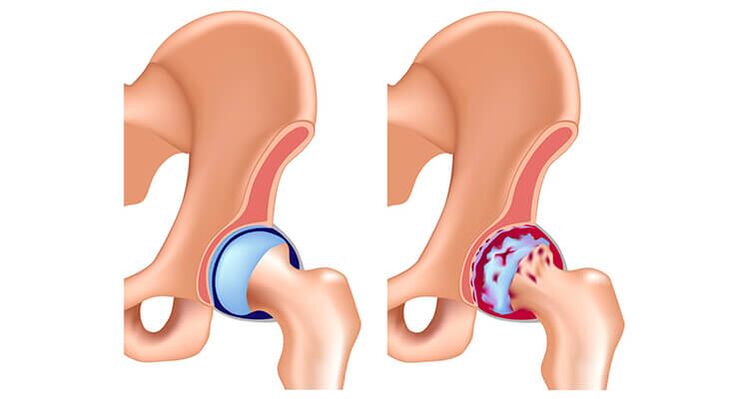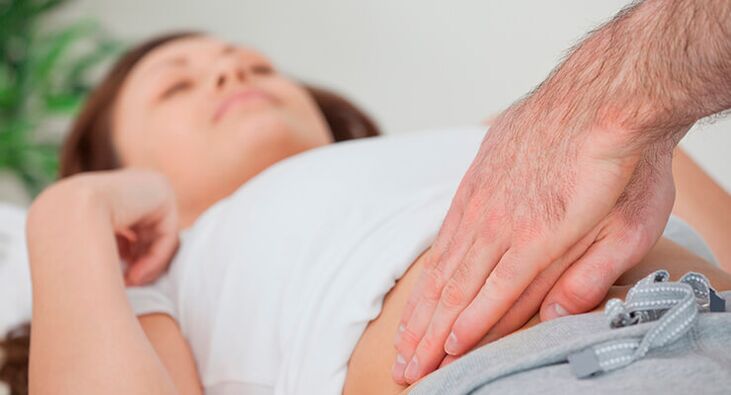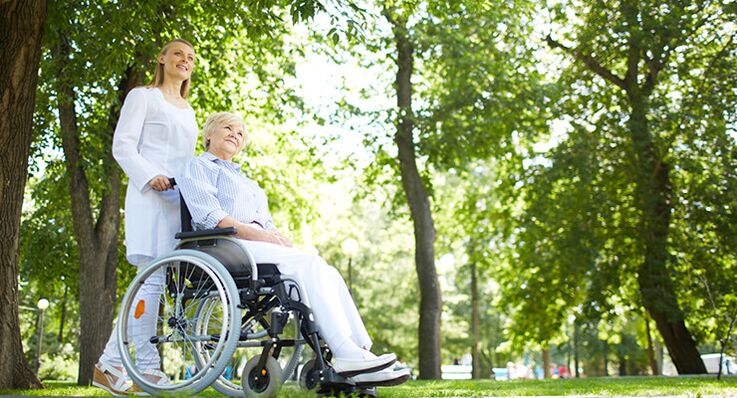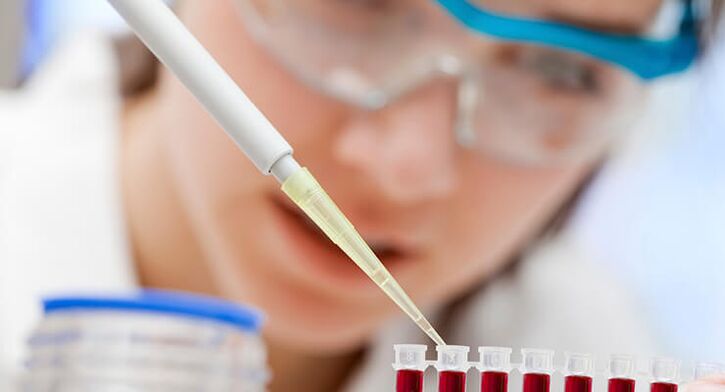
Coxarthrosis, or degenerative disease of the hip joint, is one of the most serious pathologies of the musculoskeletal system. Due to the large size of the joint structures, the pain and discomfort is much more severe than when other joints are affected. The consequences of the pathology are also serious - if the destruction of small bony joints causes a lot of discomfort, then untreated osteoarthritis of the hip joint is a direct path to disability. Only the right therapy and sometimes surgery will help a person not lose the ability to walk.
What is hip osteoarthritis?
Coxarthrosis, osteoarthritis, arthrosis of the hip joint are synonymous with the same pathological process that occurs in the thigh region on one or both sides. In modern medicine, the pathology is also called osteoarthritis: it was previously believed that inflammation was not characteristic of degenerative processes, but more accurate studies have shown the opposite. Affected articular cartilage tissues release inflammatory elements (interleukins), so osteoarthritis is another correct term.
The disease is characterized by such signs:
- It progresses constantly, passing from one stage to another,
- Leads to persistent pain, limited joint mobility,
- It causes deformation of bone surfaces, partial or complete destruction of hyaline cartilage,
- In the advanced stage, it is more characteristic of the elderly, but often starts after 40 years of age,
- The symptoms of the pathology are present in 70% of people over 75 years old,
- Women are more likely to suffer from the disease.

A joint is a mechanism in which there are friction parts. Due to a decrease in the quality or quantity of lubrication (interarticular fluid), the contact surfaces wear out. Small cracks appear in the cartilage, then they are destroyed, and instead of healthy tissue, a callus appears. Such growths do not allow the leg to move normally, its functions are lost.
Reasons for the development of the disease
Osteoarthritis of the right or left thigh region can be primary or secondary, being the first typical option for the elderly. The disease of the primary form develops over decades, is associated with age-related wear and tear and cartilage destruction.
Secondary coxarthrosis has other causes and can start even in a young person. It is associated with the resulting inflammation (infectious, autoimmune), which gives impetus to the appearance of the pathology. Also, the cause can be trauma to the hip (contusion, dislocation, bone fracture). Other possible causes of the secondary form:
- Operations in this anatomical zone,
- Diabetes mellitus and other serious metabolic pathologies,
- hormonal diseases,
- Congenital and acquired forms of curvature and displacement of bones,
- hip dysplasia in a child
- Acetabular protrusion, femoral head necrosis,
- Vascular diseases of a systemic nature, leading to a deterioration in cartilage nutrition,
- Bone tuberculosis, rheumatoid osteoarthritis,
- Gout, Perthes disease,
- Tumors are both benign and malignant.

Symptoms of osteoarthritis of the hip joint in any form will appear more quickly if risk factors act on the body:
- Constant stress, nervous shocks, depressions and worries,
- Obesity, even moderately overweight,
- unfavorable heredity,
- Physical inactivity, sedentary work or certain occupations with high joint load,
- Excessive physical loads (force), professional sports.
disease symptoms
The development of osteoarthritis of the hip joint and its symptoms cannot be neglected. Even at an early stage, the disease makes itself felt and, above all, the pain. Pain in emerging and progressive osteoarthritis of the hip joint increases as the disease progresses from one stage to another. They appear in the thigh area, give to the knee, to the groin, even to the lower abdomen. Usually after sleep, the pain subsides, but in an advanced stage it can be present all the time. On palpation, pain is not always felt, because joint damage can begin with deeply located parts.
Other possible signs of the disease:
- The crisis that appears when moving, sometimes even with a slight,
- limping, shifting gears,
- Shortening of the leg on the side where there is osteoarthritis of the hip joint,
- Stiffness of movement, limited rotation, leg movement.
As development progresses, other signs of pathology appear. Thus, palpation gives a sensation of bone deformation, the presence of growths. During the examination, the doctor notes muscle atrophy, and the patient, even in everyday life, is forced to move around with a cane, a crutch - due to pain and weakness of the limb.

In general, pain and other clinical manifestations are highly stage-dependent. There are such stages of coxarthrosis:
- First.Symptoms are mild, but the initial changes are already noticeable during diagnosis. Synovial fluid becomes thicker, its volume decreases, the cartilage structure changes at the end of the stage. Small cracks appear, which the body tries to heal with the formation of small "calluses".
- Second.Pain at this stage is quite noticeable, grinding, restriction of motor function is obvious. Pain syndrome radiates to other parts of the body, spreads throughout the leg. The picture shows: thinning of the cartilage, narrowing of the distance between the bones, violation of the structure of the joint surfaces, sometimes - displacement of the head of the bone from the cavity. The number of bony growths (osteophytes) is increased.
- Third.The pain becomes unbearable, a person is severely limited in movement, many stop moving altogether. Cartilage is almost completely destroyed, muscles atrophy, the joint is severely deformed. Bone osteophytes look like spines and irritate nerve endings.
What are the risks and complications?
It is easy to understand that if, with a pathology such as arthrosis of the hip joint, the symptoms and treatment are incorrectly determined, out of time, this threatens disability. Excruciating pain syndrome, inability to walk, need for constant care - this is what a person without treatment for this disease expects.
Disability in case of damage to the thigh bones is established according to the severity of the disease, with the complete absence of the opportunity to work, they give the first group. Such patients undergo surgery - this is the only effective method of treatment in such a situation. But even modern methods of operations can carry the risk of complications:
- infectious infection,
- thrombosis, thromboembolism,
- Significant blood loss.

The overall proportion of complications is small - 0. 5-2%, but they do occur. Most of the time, there is an infection of the prosthesis, which must be replaced with a new one. That is why after the operation it is important to carry out a course of antibiotics.
Diagnostic measures for osteoarthritis
It is recommended to seek help from a traumatologist, surgeon, orthopedist at the first signs of damage to the femoral area. Initially, if osteoarthritis of the hip is suspected, the doctor performs physical tests:
- Feels upper thigh, reveals pain points, bony osteophytes,
- Performs passive leg movements - flexion, extension, abduction and adduction to determine possible range of motion.
Instrumental diagnosis will help to make a more accurate diagnosis and prescribe treatment for osteoarthritis of the hip joint. Radiography is usually performed - the cheapest and most available research method. It is recommended to take an X-ray in modern equipment or replace it with a computed tomography, where the quality of the images is much higher. CT provides comprehensive information about the condition of bones, cartilage and joint surfaces. If a detailed study of the soft tissue condition is needed (for example, when a nerve root is pinched), the specialist will prescribe an MRI.

Other possible diagnostic measures:
- joint ultrasound,
- arthroscopy,
- Blood test for rheumatoid factor,
- tuberculin tests,
- Biochemical analysis for suspected diabetes mellitus, gout.
It is very important to find the cause of secondary coxarthrosis, because without affecting it, it will not be possible to stop the course of the disease.
Treatment of osteoarthritis of the hip joint - medications and physical therapy
If the signs of the disease are implicit and it has not passed to the stage of irreversible changes, then conservative treatment will help the patient. Drug therapy will also be needed when osteoarthritis of the hip joint becomes severe - as part of a course of treatment.
How to treat osteoarthritis of the hip joint? There is a drug correction program for the disease:
- Non-steroidal anti-inflammatory drugs. Pills or injections will help to get rid of pain, inflammation. They cannot be used uncontrollably - the cartilage's own ability to regenerate will decrease, moreover, the stomach and intestines suffer greatly from NSAIDs.
- Vascular drugs. Treatment with these means helps to strengthen cartilage nutrition and contributes to its restoration.
- Muscle relaxants. Indicated for spastic muscle pain caused by damage to the thigh region.
- Chondroprotectors. Osteoarthritis of the hip joint requires many months of mandatory use of these drugs. It is also necessary to apply injectable forms in courses, including injection into the joint cavity. An even more effective technique is the introduction of hyaluronic acid preparations into the joint.
- Corticosteroids. Used in extreme cases in the form of intra-articular injections. Such treatment is necessary if symptoms become unbearable.

External agents (ointments, gels) for coxarthrosis are usually ineffective due to the deep location of the joint. But physical therapy techniques are often used and provide serious pain relief. UHF, laser therapy, magnetotherapy are done in the thigh area, UHF, massage are performed. In addition, with osteoarthritis, manual therapy is indicated, in some cases - joint traction.
Folk remedies for osteoarthritis
Many people use alternative treatment for this pathology, although osteoarthritis of the hip joint does not respond well to various external methods. Only with a severe pain syndrome can insulating compresses be applied to the sore spot, although this is more disturbing. Treatment of complicated and advanced arthrosis of the hip joint is best done with oral medications:
- Pour 100 g of dry cinquefoil grass with 500 ml of vodka, insist in the dark for 10 days, take 30 drops three times a day to relieve inflammation,
- Make jam every day, in the absence of contraindications, regularly prepare jam - dishes will serve no worse than chondroprotectors.
You can relieve the pain with the help of such a compress. It is necessary to equally mix honey, medical bile, ammonia, glycerin, apply to the joint, tie with a warm cloth. Leave the compress for 3 hours and then rinse.

Other methods and operation
For the complete treatment of osteoarthritis, it is very important to follow the right diet, you will have to give up foods that interrupt the blood supply and impair the nutrition of the cartilage. They are smoked meats, vinegar, salty foods, fried foods, in addition to foods with preservatives, trans fats. But there should be more dishes with magnesium, potassium, iodine, calcium in the diet.
What is needed to treat osteoarthritis of the hip joint are therapeutic exercises. Daily warm-ups, special exercises in the supine position should be performed by all patients. For example, you need to slowly lift your leg and keep it off the floor for a few seconds. It is important to exclude sudden movements, to avoid long and fast walks - with coxarthrosis this will only increase the progression of the disease. To unload the joint, you can use a cane, crutches, and an orthopedist may also recommend special orthotics to alleviate the load.
Treatment of osteoarthritis of the hip joint of the third and last stage is carried out only with the help of surgery, other methods are ineffective. In 95% of cases, the operation is successful, leg movements are fully restored. But prostheses are not eternal, their lifespan is up to 20 years, so the operation is a last resort. During arthroplasty, your own joint is replaced with an artificial one, and arthrosis of the hip joint no longer threatens you.

Prevention of coxarthrosis
In order not to carry out a complex treatment of the pathology, so as not to suffer from pain syndrome, it is important to start preventive measures from an early age. The prevention of coxarthrosis is especially important for those who are exposed to risk factors.
So that the blood supply to the cartilage does not suffer, you must:
- Eat with the inclusion of plant foods on the menu, a sufficient amount of lean meat, cottage cheese, jam, sour milk food,
- Quit smoking, don't abuse alcohol,
- In sedentary work, warm up regularly, do simple exercises,
- Abandon a sedentary lifestyle in favor of skiing, swimming and other low-intensity aerobic activities.
In order for a person not to be disturbed by arthrosis of the hip joint, one must control body weight, prevent obesity and the appearance of up to 5-10 extra pounds - this seriously increases the load on the femoral area. Coxarthrosis can only be prevented with an integrated approach and a healthy lifestyle!




























